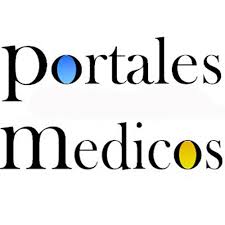Neumotórax espontáneo secundario a enfermedad bullosa en paciente joven: reporte de caso clínico
Spontaneous pneumothorax secondary to bullous lung disease in a young patient: a case report
Resumen
RESUMEN
La enfermedad bullosa pulmonar, especialmente en pacientes jóvenes, representa un desafío diagnóstico cuando se asocia a neumotórax espontáneo. El objetivo de este reporte es presentar un caso clínico poco frecuente de neumotórax espontáneo secundario a enfermedad bullosa apical en una paciente joven, sin antecedentes de tabaquismo, con sospecha clínica de colagenopatía hereditaria tipo síndrome de Ehlers-Danlos. Se trata de una mujer de 22 años con asma bronquial severa, quien ingresó por disnea progresiva, dolor torácico derecho y hallazgos clínico-radiológicos compatibles con neumotórax espontáneo. El enfoque metodológico consistió en la revisión retrospectiva del expediente clínico, estudios imagenológicos, procedimientos quirúrgicos y evolución hospitalaria. La paciente fue manejada inicialmente con drenaje pleural, sin mejoría, por lo que se realizó toracotomía posterolateral derecha con resección de bulas apicales y pleurodesis mecánica-química. Durante su hospitalización se integraron estudios de imagen (radiografía, tomografía de tórax y ecocardiograma transtorácico) y evaluación multidisciplinaria, confirmando enfermedad bullosa complicada sin afección cardiovascular. El análisis histopatológico evidenció enfisema bulloso, fibrosis intersticial leve y alveolitis crónica sin signos de malignidad. Se logró resolución clínica del cuadro respiratorio, con egreso en condiciones estables y seguimiento ambulatorio por cirugía torácica, neumología y medicina interna. Este caso resalta la importancia de la evaluación integral en pacientes jóvenes con disnea persistente, la consideración de enfermedades del tejido conectivo como etiología subyacente, y el rol del abordaje quirúrgico oportuno como estrategia efectiva para evitar recurrencias y complicaciones del neumotórax espontáneo secundario.
ABSTRACT
Pulmonary bullous disease, particularly in young patients, represents a diagnostic challenge when associated with spontaneous pneumothorax. The objective of this case report is to present an uncommon clinical scenario of spontaneous pneumothorax secondary to apical bullous disease in a young female patient, without smoking history, and with clinical features suggestive of a connective tissue hereditary disorder such as Ehlers-Danlos syndrome. A 22-year-old woman with severe allergic asthma was admitted with progressive dyspnea, right-sided chest pain, and clinical-radiological evidence of spontaneous pneumothorax. The methodological approach consisted of a retrospective review of the patient’s medical record, imaging studies, surgical interventions, and hospital course. Initial management included pleural drainage without improvement. A right posterolateral thoracotomy was performed with resection of apical bullae and mechanical-chemical pleurodesis. During hospitalization, multidisciplinary evaluation and imaging studies (chest X-ray, thoracic CT scan, and transthoracic echocardiogram) confirmed complicated bullous disease without structural cardiovascular compromise. Histopathological examination showed bullous emphysema, mild interstitial fibrosis, and chronic alveolitis with no evidence of malignancy. Complete clinical resolution was achieved, and the patient was discharged in stable condition with outpatient follow-up by thoracic surgery, pulmonology, and internal medicine. This case highlights the importance of comprehensive evaluation in young patients with persistent dyspnea, the need to consider connective tissue diseases as an underlying etiology, and the value of early surgical management as an effective strategy to prevent recurrence and complications of secondary spontaneous pneumothorax.
Recibido: 31-03-2025
Aceptado: 06-05-2025
Publicado: 04-07-2025
Palabras clave
Texto completo:
PDFReferencias
British Thoracic Society. (2023). British Thoracic Society Guideline for pleural disease. Thorax, 78(11), 1143-1156. https://doi.org/10.1136/thorax-2023-220304
Cardillo, G., Carleo, F., Carbone, L., Di Martino, M., Salvadori, L., & Petrella, L. (2009). Videothoracoscopic talc poudrage in primary spontaneous pneumothorax: A single-institution experience. Chest, 135(2), 519–525. https://doi.org/10.1378/chest.08-1444
Goudarzi, H., Mashhadi, M. A., & Darbanian, P. (2022). Giant pulmonary bullae in young adults: A retrospective analysis. Annals of Thoracic Medicine, 17(1), 25–29. https://doi.org/10.4103/atm.atm_152_21
LoCicero, J., Feins, R., Colson, Y., & Rocco, G. (Eds.). (2018). Shields’ general thoracic surgery. (8th ed.). Lippincott Williams & Wilkins.
Malfait, F., Francomano, C., Byers, P., Belmont, J., Berglund, B., Black, J., Tinkle, B. Bloom, L., Bowen, J., Brady, A., Burrows, N., Castori, M., Cohen, H., Colombi, M., Demirdas, S., De Backer, J., De Paepe, A., Fournel-Gigleux, S., Frank, M., Ghali, N… Tinkle, B. (2017). The 2017 international classification of the Ehlers–Danlos syndromes. American Journal of Medical Genetics Part C: Seminars in Medical Genetics, 175(1), 8–26. https://doi.org/10.1002/ajmg.c.31552
MacDuff, A., Arnold, A., & Harvey, J. (2010). Management of spontaneous pneumothorax: British Thoracic Society Pleural Disease Guideline 2010. Thorax, 65(Suppl 2), ii18–ii31. https://doi.org/10.1136/thx.2010.136986
Merck Manuals Professional Edition. (2023). Neumotórax espontáneo secundario. https://www.merckmanuals.com/es-us/professional/enfermedades-pulmonares/trastornos-pleurales/neumot%C3%B3rax
Morales-Ortiz, J., Romero-Caballero, M., Sánchez-Caballero, C., & García-López, M. (2022). Neumotórax espontáneo recidivante secundario a bulla pulmonar. Cirujano General, 44(4), 193–196. https://doi.org/10.35366/108604
Organización Panamericana de la Salud. (2024). Declaración de Helsinki de la Asociación Médica Mundial - Principios éticos para las investigaciones médicas en seres humanos. https://www.paho.org/es/documentos/declaracion-helsinki-amm-principios-eticos-para-investigaciones-medicas-seres-humanos
Pavord, I., Beasley, R., Agusti, A., et al. (2018). After asthma: Redefining airways diseases. The Lancet, 391(10118), 350–400. https://doi.org/10.1016/S0140-6736(17)30879-6
Perdu, J., Wiart, F., Bensaid, S., Boudjemline, Y., Thambo, J. B., Sidi, D., & Bonnet, D. (2006). Vascular Ehlers–Danlos syndrome in childhood: case report and review of the literature. Pediatrics, 117(5), e1345–e1351. https://doi.org/10.1542/peds.2005-1819
Pyeritz, R. E. (2019). Ehlers–Danlos syndrome. New England Journal of Medicine, 380(22), 2131–2141. https://doi.org/10.1056/NEJMra1807780
Sano, H. (2018). Multidisciplinary team approach for complicated pneumothorax. Journal of Thoracic Disease, 10(9), S1078–S1084. https://doi.org/10.21037/jtd.2018.09.38
Sociedad Española de Neumología y Cirugía Torácica. (2008). Normativa sobre el diagnóstico y tratamiento del neumotórax espontáneo. Archivos de Bronconeumología, 44(8), 437–448. https://doi.org/10.1016/S0300-2896(08)75308-5
The Vascular Ehlers-Danlos Syndrome Movement. (2023). El síndrome de Ehlers-Danlos vascular. https://thevedsmovement.org/wp-content/uploads/2023/01/VEDS-FactSheet-2023-Spanish.pdf
Enlaces refback
- No hay ningún enlace refback.
Depósito Legal Electrónico: ME2016000090
ISSN Electrónico: 2610-797X
DOI: https://doi.org/10.53766/GICOS
| Se encuentra actualmente registrada y aceptada en las siguientes base de datos, directorios e índices: | |||
 | |||
 |  |  |  |
 |  | ||
 |  |  |  |
 |  |  |  |
 |  |  |  |
 |  | ||
![]()
Todos los documentos publicados en esta revista se distribuyen bajo una
Licencia Creative Commons Atribución -No Comercial- Compartir Igual 4.0 Internacional.
Por lo que el envío, procesamiento y publicación de artículos en la revista es totalmente gratuito.

